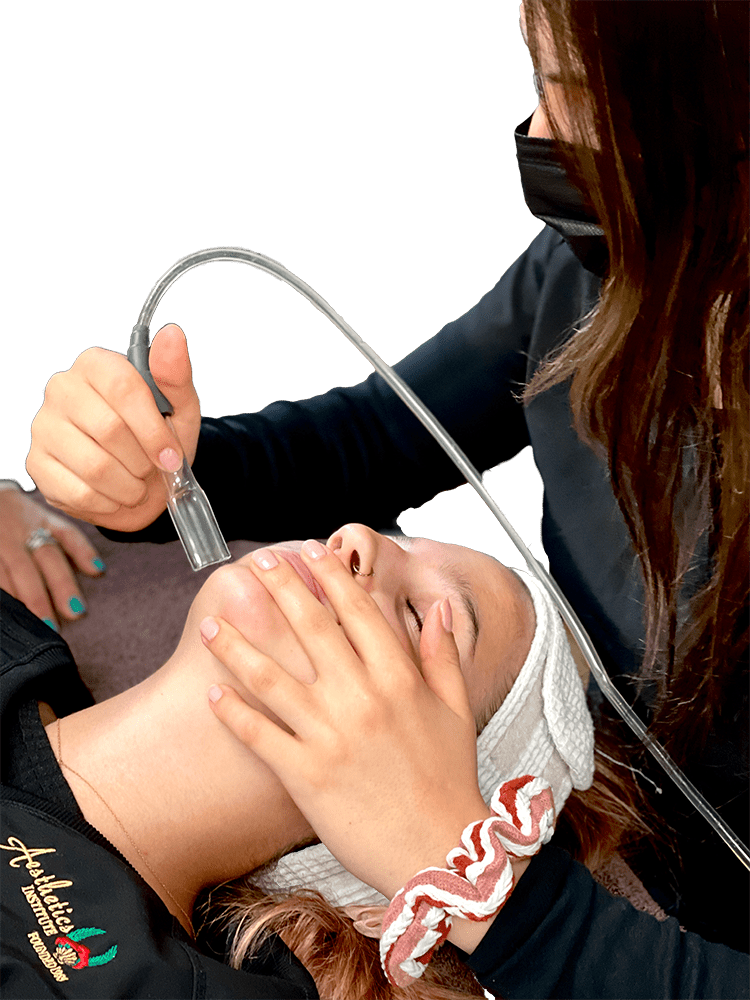What to expect:
You may experience a tingling, stinging, or burning sensation during treatment.
BEFORE TREATMENT INSTRUCTIONS
Refrain from these activities for seven days prior to your treatment:
Do not have another treatment unless recommended.
Avoid any skin irritants, including retinoids and retinol, glycolic and salicylic, acids, benzoyl peroxide, astringents, and some Vitamin C.
Do not wax, tweeze, or use depilatory creams.
Do not tan.
Do not schedule a procedure if you are pregnant or think you are pregnant.
Continue to use other skincare products, including hydroquinone or lightening agents.
On the day of your treatment:
Wash your face and apply moisturizer.
Do not apply makeup.
At home, have Benadryl and aspirin or Tylenol available.
POST TREATMENT INSTRUCTIONS
Immediately after the treatments, you should apply a cool pack, as there may be mild swelling. It is normal for the treated area to feel like a sunburn for a few hours. You should use a cold compress if needed. Avoid any trauma to the skin for up to 2-5 days, such as bathing with very hot water, strenuous exercise, or massage.
Avoid picking or scratching the treated skin to achieve your best results. If there is any crusting, apply antibiotic cream. You may apply some aloe vera gel or other after-sunburn treatment such as Desitin that you have used in the past.
Mineral make-up may be used after the treatment unless there is epidermal bleeding. It is recommended to use new or disinfected makeup brushes to reduce the possibility of infection. Keep the area moist. Any moisturizer without alpha-hydroxy acids will work.
You may shower directly after the procedure in tepid water. The treated area may be washed gently with a mild cleanser. The skin should be patted dry and NOT rubbed.
You will experience redness and flaking from five to fourteen days after the treatment. Avoid direct sun exposure and tanning beds for 1-2 months and throughout the course of the treatment so as to reduce the chance of dark or light spots. Use sunscreen SPF 25 or higher at all times throughout the treatment when going outside.
Avoid tweezing, waxing, bleaching, or laser services during the course of the treatment. Do not use any irritants such as Retin-A, Benzoyl Peroxide, or astringents.
Day 1:
Do not apply anything else to the skin. Your skin will appear sunburned today and will continue to look redder as the day continues. It will begin to feel tight like you have a sunburn. You may also experience itching or mild burning as the peel penetrates deeper into the skin. You can help to alleviate this sensation by taking Benadryl or Zantac (for itching) and aspirin or Tylenol (for discomfort), as needed. You will want to avoid wearing makeup or tight-fitting glasses for the first day or two. Pressure from the nosepiece may cause deepening of the peel in that area.
Day 2:
Your skin will continue to feel very tight. The top layers of skin are dehydrating. You will look like you have an uneven sunburn/tan. You may still feel comfortable in public today. By the end of the day, your skin may begin to flake, usually starting between your eyes, around your mouth, and nose. Sun-damaged spots may turn darker prior to peeling. Rinse your face with water today. Use only your hands. Cool or tepid water generally feels best. Do not use a cleanser or moisturizer. DO NOT PEEL THE SKIN. You may reapply Circadia’s Post Peel lotion, mild hydrocortisone cream, or Aquaphor if any area is irritated.
Day 3:
Your skin will flake, peel and feel very tight today. DO NOT peel the skin at any time. If you were to peel skin that is not ready to come off, you could cause scarring. You may carefully use manicure scissors to clip any hanging skin. Today and tomorrow, you may want to avoid making social plans. Begin using a gentle cleanser today and a strong hydrating cream. If you go outside, do use SPF. Avoid using retinoids, retinol, acids, and astringents. You must completely avoid the sun during this time. This is the last day you may use hydrocortisone to irritated areas.
Day 4:
The majority of peeling takes place between days 3 and 4. Continue with cleansing and moisturizing. Some areas will have completely peeled, and other areas may not have peeled at all. This is normal.
Day 5-6:
Your skin may be tender for a few days. Continue to avoid sun exposure for the next two weeks. You may wear SPF, but only if it is not irritating.
Day 7:
Today, you may be seen for a SilkPeelTM treatment to remove the remaining flaking skin. Ease back into your skincare products. Wear sunscreen at all times following your Silk PeelTM treatment.
Between week one and week two:
You may resume waxing, tweezing, or depilatory creams during this week. By the end of the second week, you should be able to tolerate glycolic, salicylic, and retinol or retinoid products. You will notice your skin is pink for about one more week.
If you have questions at any time, please call Aesthetics Institute at 503-238-1793

